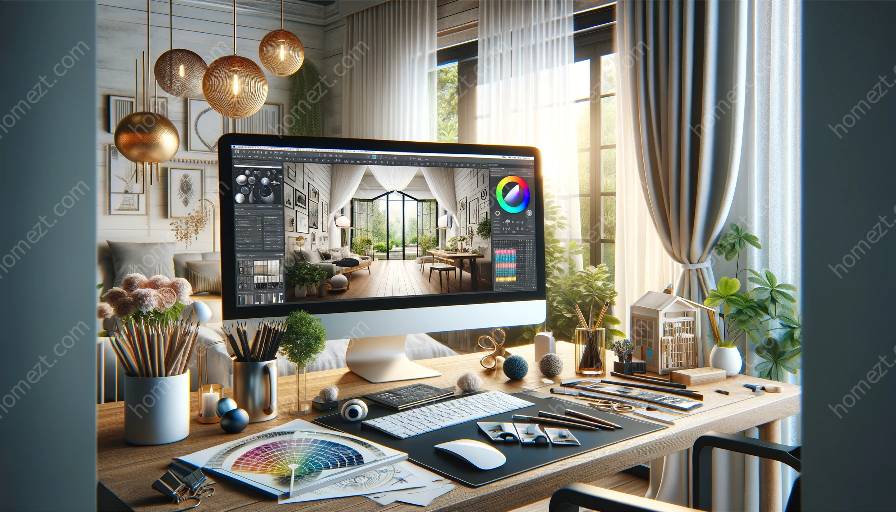Architects and designers often collaborate to bring creative visions to life, and the role of software in this partnership is significant. Design software and tools play a crucial role in enhancing the creative process and enabling effective communication between professionals. In the context of interior design and styling, the use of software offers numerous benefits for streamlining workflows and realizing innovative design concepts. Let's explore the symbiotic relationship between designers, architects, and software in shaping exceptional interior spaces.
The Symbiotic Relationship
The collaboration between designers and architects is rooted in the shared goal of creating functional and aesthetically pleasing spaces. It's a dynamic partnership where architectural expertise meets creative design sensibilities. Software serves as the bridge that connects the two disciplines, enabling seamless collaboration and integration of diverse perspectives.
Enhancing Creativity and Visualization
Designers and architects harness specialized software to unleash their creative potential. From 3D modeling and rendering tools to virtual reality applications, these software offerings empower professionals to visualize and experiment with spatial concepts. The ability to craft detailed, realistic representations of interior designs facilitates effective communication and ensures that the envisioned outcomes are accurately conveyed to clients and stakeholders.
Efficiency and Project Management
Software solutions tailored for design and architecture streamline project management tasks, optimizing workflows and enhancing efficiency. Collaborative platforms allow real-time sharing of design iterations and feedback, fostering a more agile and iterative design process. Additionally, project management features, such as scheduling, resource allocation, and cost estimation tools, support the seamless integration of architectural and design considerations, ensuring that projects are executed with precision and adherence to shared visions.
Integration of Design Disciplines
Interior design and styling are multidisciplinary fields that engage a diverse set of skills and expertise. Design software acts as a unifying force, providing a common platform for integrating architectural plans, interior layouts, material selections, and ambient lighting designs. Through software, designers and architects can collaboratively explore the intersection of diverse design disciplines, resulting in cohesive and harmonious interior environments.
The Role of Design Software and Tools
Design software and tools are pivotal in shaping the collaborative landscape of interior design and architecture. These solutions are designed to empower professionals by offering a wide array of capabilities, including:
- Dynamic Visualization: Advanced rendering and visualization tools enable designers and architects to create immersive, photorealistic representations of interior spaces, allowing clients and stakeholders to fully grasp the spatial concepts and design intent.
- Parametric Design: Software that supports parametric modeling and algorithmic design empowers professionals to explore complex geometric configurations and adaptive design solutions, pushing the boundaries of creativity and innovation.
- Collaborative Platforms: Cloud-based collaboration platforms facilitate real-time interaction and seamless sharing of design data, fostering effective communication and collective decision-making among design and architectural teams.
- BIM (Building Information Modeling): BIM software revolutionizes the design and construction process by providing a comprehensive digital representation of building elements and their interactions, enabling efficient coordination and integrated project delivery.
- Material Libraries and Analysis: Design software often includes extensive material libraries and analysis tools, empowering professionals to evaluate material performance, sustainability, and aesthetic appeal, ultimately informing more informed design decisions.
- Documentation and Presentation: Software solutions offer efficient tools for producing detailed documentation and compelling presentations, enabling designers and architects to effectively communicate their design visions to clients and stakeholders.
Embracing the Future of Collaborative Design
The future of collaboration between designers and architects is intertwined with the advancement of design software and tools. As technology continues to evolve, new possibilities emerge for enhancing the creative process, improving project outcomes, and enriching the user experience. The seamless integration of design disciplines, the democratization of design tools, and the adoption of sustainable and innovative design practices are all facilitated by the continual evolution of software solutions. The collaborative partnership between designers and architects, supported by cutting-edge software, paves the way for the creation of exceptional and impactful interior spaces that resonate with both functionality and beauty.


























